
MUSIC EDUCATION IN MALAYSIA: THE CURRENT REALITY (PRESNTED BY JOHAMI ABDULLAH @ JOE CHELLAH) at The 1st Malaysian National Conference for Music Education on 1.7.2002 at The Dewan Tun Hussein Onn,PWTC, K.L.
INTRODUCTION
Bismillah hirrahman nirrahim. Honored guests, ladies and gentlemen. Assalammualaikum and Selamat Sejahtera.
I am indeed much honored to address all of you this morning. It is my intention to provoke your thoughts and get you thinking. I must emphasize that the views expressed herein are entirely my own and I speak mostly from my own limited knowledge and experience as an educator at the primary, secondary and tertiary levels since 1960.
DEFINING THE PARAMETERS
This presentation aims to be more evaluative and analytical rather than purely descriptive. All of us are directly or indirectly involved in music education. If that is the case, it makes it all the more redundant to spend too much time describing the current music education scenario.
We also need to synchronize our thoughts and understanding of the semantics of the words in the topic itself – Music Education in Malaysia: What is the Current Reality? I am sure the terms “music”, “music education”, “Malaysia” and “current” can all be viewed quite differently and therefore, need to be contextually qualified first.
The concept of “music” has been with humankind since the earliest of times. It functioned and graced all cultures within the confines of their respective societal norms and philosophy. Everyone can agree that music is organized sound. It is scholars who often complicate things and differ in views and wish to be more precise.
This reminds of a satirical poem titled sarcastically Ars Poetica. It talks about the owner of the goose that laid the golden eggs. Instead of valuing and cherishing his/her good fortune, the inquisitive owner wanted to know how and where the eggs were actually coming from. The poem ends by saying that the owner pushed his head into the anus of the goose and suffocated himself to death in the process. What the writer is highlighting is that at times we just need to relax and enjoy the music in laid-back fashion. There is no use trying to analyze the texture or harmonic progression of the asli band at a joget lambak session at a Malay wedding. The only ones who can be excused for doing this are those foreign music scholars out here on field research. Anyway, we do need such persons with an enquiring mind for the whole of humankind may still be dressed in leaves and living in caves if not for such inquisitive minded people.
At his juncture, I offer a more inclusive definition for music as “the science and art of combining musical sounds, natural or artificial, in an aesthetically pleasing and coherent manner which may reflect the general psyche and underlying philosophy of a people or civilization.
Many educators still tend to equate the words “teach” and “educate” and use the two interchangeably. To me, the word “education” and “teaching” are related but not necessarily synonymous. Education is a word that implies a larger dimension and scope that goes beyond teaching - the macrocosm if you like.
If one teaches a monkey to do somersaults and similar tricks, the animal is not being educated. We certainly cannot educate humans in such an unthinking manner. The Malaysian Kementerian Pendidikan was originally known as Kementerian Pelajaran until the early 1980’s. Perhaps that is why even the term “teacher training” has been replaced with “teacher education” since the early 80’s.
Problems also arise in agreeing upon what constitutes music education itself when “music” and “education” are put together. It is my contention that music education is a term that embraces both music in education and education in music. The following diagrams should help to visualize this.
Fig. 1
Music education as a subject in the education process encompasses both educating one about music as well as using music for specific goals as outlined in Fig. 2. In the “Music in Education” component, music is used for very utilitarian functions. Music is used in this way most obviously at the kindergarten, primary and secondary school levels to teach and instill values.
Fig. 2 Fig. 3
Next, for the term “current”, I have chosen the period 1983 up through 2002. The justification for going backwards through time from the present is as follows. I tried to identify a period in recent Malaysian history where there had been a noticeable shift or change in the mindset of Malaysians or in their attitude towards music and / or music education. In 1983, the Malaysian Ministry of Education made it compulsory for every child in Malaysia to learn music at the primary level introducing the Kurikulum Baru Sekolah Rendah (KBSR) - may God bless the soul or souls who decided on this benchmark development. They will forever remain unsung heroes in the history of music education in Malaysia. This move was primarily conceived, we were told, to balance a syllabus that was perceived as being too academic. Whether this objective has been met or not should be the lesser concern for music educators. The important thing is to ensure that music remains in the curriculum.
The scope for today’s discussion is confined to the whole of Malaysia. When we talk of Malaysia, we need to remind ourselves that:
1. The people of the Klang Valley and also the more affluent members of the Malaysian society cannot be truly be representative of the general Malaysian populace.
2. The significant majority of Malaysians still lives in the rural areas and sends their children to schools where the actual operational music curriculum can be quite different from that which is offered in a more established urban schools.
3. We must take into account differing situations and not tend to think of Malaysia as though it is one homogenous and monolithic structure which corresponds to our own little bubble of experiences.
4. We must constantly remind ourselves that those who speak English habitually and have studied Western music in its variant forms, do not constitute the bulk of the Malaysian people.
THE DISCUSSION PROPER
The Statement
My main aim today is to convert all of you to be agents of change and in this matter am reminded of what the eminent music educator Dalcroze once said.
“People will have nothing to do with change so long as old ideas contribute to their satisfaction.“
Emile Jacques Dalcroze
We have to create dissatisfaction in order to encourage change. One law of physics states “a body at rest will tend to remain at rest unless acted upon by another force”. You my friends are this force, which has to create movement for music education in Malaysia that has been at rest for a long time. May the force be with you!
How successful has music education been in Malaysia? Let us liken music education in Malaysia to a durian tree. One great teacher who taught with similitude and analogy said that a tree is known by its fruit. A durian tree is not really a durian tree unless it bears durian fruits. In the music education context in Malaysia we are yet to see the “fruits”.
It is my contention that music education in Malaysia has not really moved anywhere. The progress made in Malaysian music education since 1983 would be to liken it to the wheels of a car that gets stuck in mud. Only the higher speed of the spinning wheels may portray an illusion of getting along. If you are sitting in a stationary bus, the actual movement of another bus next to it makes you feel that your own bus is moving. This phenomenon is called parallax motion in astronomy and explains why people once mistakenly held the view that the sun circled the earth (geocentric view). People who differed were even put to death in medieval Europe.
To my mind, Malaysian music education is currently enjoying only such illusions. This sort of apparent motion in music education has been with us since 1983 at all levels of the education process. The government and the lay public have spent and invested vast amounts of money in both public and private music education. How have the results been at the different levels of formal music education?
Formal Music Education in The Schools
First let us take the pre-school level. What happens there is any one’s guess. We will leave this level at that for now. At the primary schools however, we have a formal music curriculum with eager children who are more than ever willing to learn. Actually, the children are not and never will be the problem in music education anywhere in the world.
According to a survey (research?) conducted by Pusat Perkembangan Kurikulum some time ago, music is the most popular subject and probably remains so to date. This might be true perhaps because there are no “real” tests or “examinations” to worry, fear and dread about. Moreover, the music lesson offers plenty of scope for both orderly and disorderly fun. I believe the latter is more prevalent though. Added to this is the possibility of having a music educator who could be very entertaining by singing totally out of tune, key and rhythm without even realizing it like a bad karaoke singer. This is actually quite a feat that most of us cannot do even consciously. I certainly cannot.
At the secondary school level, there is a new curriculum too but one, which makes music, an elective much to the relief of many people – some music educators included. I am told that a secondary school that wants to start a music program these days must first come up with RM 200, 000 under the KBSM scheme of things. No surprise that people steer clear away from such aspirations of having a KBSM music program. I wonder why we need that amount of money and where such a suggestion originated.
KBSM will exist and outlast the old SPM Music and SRP Music with a similar success rate too. I am told that the SRP Music and SPM music papers are still offered. No one really complains and life goes on. The schools that have always had a good tradition with brass bands and choirs carry on the tradition and boast of many shields and trophies from Pesta Muzik competitions.
Formal Music Education in Teacher Education Colleges
One might be inclined to think that at the teacher education colleges’ level things should be much better off because music education has been associated with them since the 1960’s– from the days of Day Training Centers (DTC) which later blossomed into the teacher education colleges of today. Added to it is the fact that in more recent times the good old teacher-training certificate has been upgraded to a diploma. However, sad to say I am told, the situation in the teacher education colleges is still not much different than about twenty years ago. The upgrade to diploma status has failed to attract the better crop of school leavers and the desired improvement in the input quality of student teachers has not taken place. So we are again back to square one with input material of about the same quality as the earlier certificate program teachers of yesteryears. .
Lacking in musicality and better academic prowess (credits in Mathematics, English or Science not necessary) these students drudge their way through college for the required period of study. This period requirement at college has also been oscillating between two to three years for more than half a century.
The majority of these students have failed to get the job of their first or even second preferences. Their musical background too is probably nothing to crow about. With this background, such students tend to display a very subservient behavior towards the lecturers clearly designed to placate. This strategy often succeeds and sees them through the tests and examinations over the years at college and presto what do we have? Why “ qualified” music educators, of course. My investigation reveals that many such teachers have managed to wangle their way out of teaching music upon graduation and are happily teaching some other subject which they are equally unqualified to teach.
Formal Music Education in the Universities
Today, we are proud to have seven universities offering music or music related courses namely UiTM, USM, UKM, UPSI, UM, UNIMAS and UMS)
The formal study of music has taken several turns since its introduction at Institut Teknologi MARA in 1984. This place (ITM) is the first recognized higher institution of learning to have music in the curriculum. It was placed under the School of Art and Design. After almost eighteen years the study of formal music has been separated and comes under two different faculties. Music Education comes under the Faculty of Education and The Music Department comes under the Faculty of Performing Arts.
At Universiti Putra Malaysia (UPM) the study of music comes under the purview of the Faculty of Human Ecology. At UPSI, a hint of science is apparent for it comes under the Faculty of Social Science and Arts. While holding back my reservations and comments on under which faculty the formal study of music and its related disciplines should come under, I have two very simple questions.
1. When are we ever going to have a Faculty of Music in the universities?
2. Why is it so impossible to put all branches of formal music study under one faculty – the Faculty of Music.
There might be a shortage of personnel. If that is the case what justification is there for the existence of a philharmonic orchestra in which more than 90% of its members are recruited from overseas. Surely a similar short-term solution for our universities can also be done. If this is done, I hope that country from which we invite expatriate scholars to teach here is wisely chosen. We should not be repeating the mistakes of the past.
Music education in Malaysia is clearly in an embryonic stage and more so at the universities. However, that is not going to stop me from saying what I think ought to be said. It has been my observation that music at the tertiary level in Malaysia has generally lacked a clearer sense of direction.
Certain new players, particularly UPSI, have a clearer focus in that the good people there have decided that their graduating students will staff the public schools and colleges. However, the main question for each program planner at the university to answer is this. “What is the graduating student being equipped with and what or where is his / her place in the job market out there?” That is the ultimate question. Stating the obvious, a general lack of clear direction or focus can get an institution together with its students nowhere.
The private music institutions (IPTS) may be seen to be slightly ahead in this matter of focus and direction. They have to be or may be forced to close down due to lack of students / business. The public schools, colleges and universities do not have this sort of survival fate or syndrome to worry about. This can be a problem if future job prospects and requirement(s) for the graduating students receive inconsequential focus. I feel that not many music educators and planners bother to know the job market for their graduating students especially in the commercial sector. Thus we shall see many so called performance majors end up teaching music as private tutors from the home or at homes. This is so because there are insufficient avenues for them to perform and more so if they perform only Western classical music.
THE PROBLEMS
1. The Layperson’s Perception Towards Music Education
To my mind, the general Malaysian perception towards music education is the main cause of all our problems and dissatisfaction. A significant minority spends much money and sends its children for costly private music instruction to play a chosen instrument of the Western orchestra with the mistaken notion that they are educating their children in music.
In a democratic society like ours, the significant majority of Malaysians seem to share a view that music is not that important in education. Such notions, however wrong, are actually quite universal and found not only in Malaysia.
The world leader and global trend setter in music education is the USA. No other country in the world comes anywhere close to it. The justification for this statement is based purely on an analytical observation of their approach towards music and music education. It is about involving philosophy, psychology, sociology, research, funding, priority, performance, pedagogical concerns and history into the formal study of music with a holistic approach.
The Music Educators National Conference (MENC) of USA which is the largest organized body of music educators in the world, is currently engaged in an active campaign entitled “Save Our Music In The Schools”. Such is the state of music education even in USA. The struggle to keep music in the curriculum is therefore not an imagined one.
Back to Malaysia, the public is yet to see any positive outcome from the inclusion of music in the formal curriculum. It does not see children being more selective or fussy about musical tastes since exposure to KBSR in 1983. The oldest member of the KBSR generation(s) should be about twenty-six years old by now. Frankly I see no significant difference between an average member of this KBSR generation today and his/her counterpart from say P. Ramli’s generation of the Merdeka years. The majority from both groups:
a. Are equally uninformed about almost all aspects of music
b. Are incapable of serious or intelligent thought / discussion about any kind of music
c. Think of music as purely serving a hedonistic function
d. Have very narrow musical tastes with a distinct preference for the pop variety
e. Can go crazy about good looking pop singers irrespective of the songs that they sing
f. Love Hindi songs passionately the main reason being the pretty faces who deliver the songs on the screen and not because of the brilliant exploitation of western musical instruments made subservient to Indian ragas and melodic schemes by Indian composers. Few have ever heard of outstanding and prolific playback singers like Mohd. Rafi, Asha Bhosle or Lata Mangeshkar let alone discuss the difference in their vocal styles or range.
g. Look down on any non-European music if they happen to come from English speaking homes with a misguided notion that the only music worth studying is Western classical music.
h. Are not bothered about the quality of commercial music reproduction resulting in widespread and high success rate for musical piracy beginning in the 60’s itself. My own commercial albums were pirated then.
i. Reject the recorder which is considered a “sakit telinga” ( pain to the ear) instrument.
j. Have not heard of patriotic songs such as “Pahlawan Ku” unless a pop singer like Siti Nurhaliza sings it
k. Do not remember locally composed children’s songs taught in schools as much as western children’s songs such as “Are You Sleeping?”
l. Readily identify any brass/wind instrument as “ trumpet”
m. Are incapable of singing the national anthem accurately with correct lyrics and in tune.
n. Look upon musical notation as both cumbersome as well as not worth learning even if they are professional musicians or singers preferring to play “ by heart” instead.
I could go on and on but surely the aforesaid should be sufficient to illustrate my point.
Perhaps music is an optional frill in the education process after all. In many a situation, music is seldom the first concern of anyone. If one shifts into a new house the first thing one need to obtain is not a piano or even a CD player but the security grille for the doors and windows. It is a matter of priorities. The 2nd President of USA Mr. John Adams wrote the following in a letter to his wife:
“ I must study politics and war, that my sons may have the liberty to study mathematics and philosophy, geography, natural history and naval architecture, in order to give their children a right to study painting, poetry, music, architecture, statuary, tapestry and porcelain”
( Adams, 1841)
2. Official Perception Towards Music
To my mind, there is nothing wrong with the National Education Philosophy instituted by the Malaysian government in so far as music is concerned. Honestly, it is governmental efforts that has placed music at all levels of the formal education process. There was no pressure from any quarters. The government seeks to educate children in a four-pronged holistic way (JERI) in the KBSR. It is an approach that transcends the “the body, mind and soul” philosophy of the early Greeks that most educators are familiar with. Improvements to the KBSR have been attempted since 1983 and may be considered an ongoing affair by the Ministry of Education.
In fact the Malaysian government must be praised for their consistent stand on music in the education process since its formal introduction. Many efforts to topple music from the school curriculum have not been successful. The tide of religious extremism too has failed to convince the authorities along similar lines.
In Malaysia, our founding fathers had far more pressing matters to contend with like building more schools, bridges, irrigation systems, roads and health facilities before the KBSR era. Only after twenty-eight years of independence music entered the formal curriculum at the primary level.
What I am trying to say is that in the normal scheme of things, music has always taken a back seat ride in all civilizations – old and new. The arts flowered only at the height of each great civilization, as was the case with the Egyptian, Greek, Roman, the Arab and the Mogul. Once empires were built, only then was attention given to the arts. In this way, the measure of greatness achieved by any country or civilization is reflected not only by its infrastructure, its technological advancements and its economy but also by its arts of which music is an integral part.
Going by this logic, the government is now beginning to concentrate on the overall quality of Malaysian life as most of the basic amenities are in place. Music education is definitely one area that needs to be uplifted in order to have a music-smart society by 2020. This is what we should be heading for. There has been some criticism against a certain friendly neighboring country that is well known for its fast paced advancements in the economic field. It is said that there is more “culture” in yogurt than in that country.
3. Parental Perception Towards Music
I would like to suggest that in the hurried society of Malaysia today many people see a far lesser need for children to learn music (and the other arts as well) than the science subjects. This has been a serious malady that has been with us at almost obsession levels since the 1970’s. This has partly been due to an over zealous “love affair” with science and technology. The music educators of the period were called upon to compose and teach songs extolling and celebrating the virtues of science and technology. There was a very noticeable proliferation of the Sekolah Menengah Vocational, Sekolah Menengah Sains and Sekolah Menengah Teknik types of schools since the late 1960’s.
Parents face another serious affliction. In their quest to obtain scholarships and admission into the universities or job market for their children especially since the implementation of the New Economic Policy in 1970, obtaining 6 A’s or 9 A’s at the once-a -year examinations has become an obsession approaching “epidemic levels”. We shall call it the A’s syndrome.
The first round in the selection process for scholarships, admission into universities and other lucrative jobs is being done mostly by computers. The priority given to other broader achievements like leading the school choir or even representing Malaysia at an international youth festival of arts or sports is given very little recognition for the job seekers. According to press reports, it is this A’s syndrome kind of parental pressure that had a girl setting herself on fire and committing suicide about two weeks ago. Faced with this reality and dilemma the majority of parents would rather shuttle students between tuition classes than have them participating in any arts or sports activities in schools.
4. Other Factors
4.1 The implementation of governmental policies, planning and strategies for music education has not been as successful as they should have been. One possible cause for this is the fact there have been educational managers at the mid-management levels (to be read as headmasters, supervisors, heads of departments) who did not exercise good judgment probably because they lacked a proper understanding of the aims and functions of music in education and society at large.
4.2 Piano teachers who had a European classical training were the initial crop of “music educators” who led the implementation process of KBSR and laid the foundations of music in the schools from way back in the 1950’s itself. Such teachers did some good but they were products of a different era that was noticeably Euro-centric with very narrow perceptions of what music study should be.
4.3 My guru and early mentor En. Nazri Ahmad used to say way back in the 1980’s that the “left hand did not know what the right hand was doing” in reference to the uncoordinated educational planning within the ministry’s various divisions. Each division at the Ministry was looking only at “the leaves and branches” and not at “the whole forest”. As such the planning by the Educational Planning and Research Division (EPRD) for example was done quite independently of the Teacher Education and Schools Division not to mention other arms of the Ministry such as the Scholarship Division, Inspectorate and Curriculum Development Centre. This practice must change.
4.4 An annual event at an educational institution (school, college, university) usually triggers of a very predictable scenario. The music department and the music educator(s) assume a very prominent front-line role and swing into action like firemen when there is a fire alarm Otherwise their role is normally a docile and unnoticed one. There is going to be a musical presentation. So and so is coming. All normal classes assume a less important role as the whole school prepares for this event. The music educators compete to conduct the choir or mini-orchestra in an effort to placate their immediate superior. That superior in turn does his thing to please his visiting superior. He will try to find out the VIP’s favorite songs and have the choir or mini orchestra perform them. The SSB assessment for both the music educator and the head is more important. If is a farewell affair P. Ramli’s “ Di Mana Kan Ku Cari Ganti” is a must although P. Ramli composed and sang it in a totally different context. I refer to this as the “Send in the Clowns” syndrome. At the circus, the clowns come out and act silly with buffoonery to fill up empty slots in between more death defying acts such as the trapeze. Such is the parallel for the wrong importance periodically dished out to music education in many institutions. Performance in itself is not bad but the scenario described above is just not right.
IN CONCLUSION
Actually, I want to say much more. I have only touched on a few issues from the big picture that I see as more pressing. Among them are the following:
1. Are we not over emphasizing the importance of Western classical music in almost all aspects of formal music study by excluding other equally rich traditions that exist?
2. We need to address the over emphasis being accorded to the “pop” music and culture in Malaysia?
3. Should not quality research backed with appropriate funding also be a major concern at the seven universities?
4. What efforts have been made to seek such research funding say from corporate patrons of the arts such as Petronas? This body has been a very good sponsor although we may not agree with the manner in which it expresses concern for the welfare of music. We have to “ educate and direct ” the many such music friendly corporate entities towards the many other fields of study and types of music that exist though it may be may be a less glamorous corporate social.
5. Should we not be concentrating more on musical understanding at the primary schools with a “ have fun will travel” type of sensory-motor approach rather than bore children at that level with aspects such as the dreary mechanics of music theory rudiments and incompatible songs that at best can be seen as not being student centered.
6. Is it not more important for our children to
6.1 Visually and aurally identify a musical instrument / music?
6.2 Be exposed to the greater dimension of music that exists instead of instilling merely a mono-focal (pop or classical )view of music in the young?
7. When is this “mosquito coil” approach to music education going to stop in Malaysia? A mosquito coil burns from the outermost point towards the inside. Beginning music education in schools from a distant past of about 400 years ago from particular geographical location is totally incongruent to the time honored axioms in education such as “from the known to the unknown” or “from the concrete to the abstract”.
8. Intellectually engage opponents of music and musical study who claim that it is not religiously permissible in an intelligent and informed way. For instance, my study does not show any instance of prohibition of music per se in any religion including Islam.
Parents, educational managers and even some of us need to be better informed about the aims and objectives of having music in the education process. In reality, there are too many issues to be dealt with but a start has to be made now.
There has been too much complacency and apathy for far too long by non other than music educators themselves who never cease to complain and readily come up with an unending list of excuses and unseen or imaginary foes like Don Quixote. Stuck with outdated and non-functional modes of thinking and approaches to music and music education, we ourselves are a major problem to the progress of music education in Malaysia. There is no use blaming merely the children, parents, religious extremists or the government. They are not the real problem.
It is our challenge to show society at large why music is so important. We should start our own version of “Save Our Music in Schools” campaign in collaboration with the many radio and TV stations and reach out to the masses. We can even network with the MENC who would be more than willing to extend a helping hand. Some of us personally know the MENC leaders. This is our duty to the nation. It is not the function of the government or the educational managers. We have to change the old mindset not only of others but our own too.
We must take a quantum leap into the real world. As they say, “Get real folks!” We have to take charge and set the tempo and mood. Clearly there is a struggle ahead. Perhaps we need to rethink our approaches and strategy. Perhaps we need to sit together as one body and look at “the forest” instead of our own little “leaves and twigs”. We need to understand the function and role of music in society much beyond the entertainment level.
The public and private institutions which offer music programs need to sit together with other bodies associated with music in Malaysia such as broadcasting stations and the recording industry and orchestrate a concerted effort. We just cannot go on like this without a clearer sense of direction. By my reckoning we have lost at least twenty years or so by bickering among ourselves and trying to prove who is better than whom and which institution is the best and other such trivia.
God willing, The Malaysian Association for Music Education (MAME) is becoming a reality tonight with its launch by His Majesty the King himself. It’s time to celebrate this event, which should unite all of us for the struggle and meet the challenges ahead of us. The Majlis Muzik Malaysia (MMM), which comprises of almost all music related associations in Malaysia is behind us all the way and has most excitedly welcomed MAME to be its full member on the council. The music fraternity is already lending us a hand for tonight’s launch ceremony.
Let us start from today to put our shoulders to the wheels of music education and move it from “this spinning in mud” situation and dedicate ourselves to truly concerted struggle up the steep and difficult uphill path. No one else can do it except we music educators ourselves from the kindergarten to the tertiary levels. We owe it ourselves, the children and our beloved country. Thank you for bearing with me.



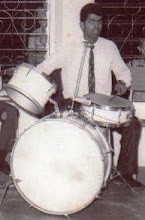

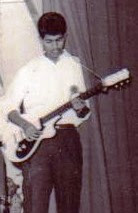


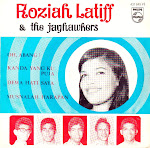



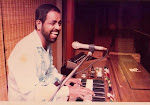

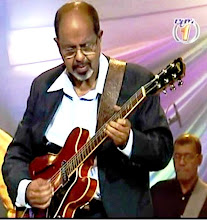



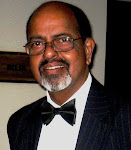



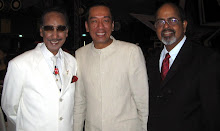

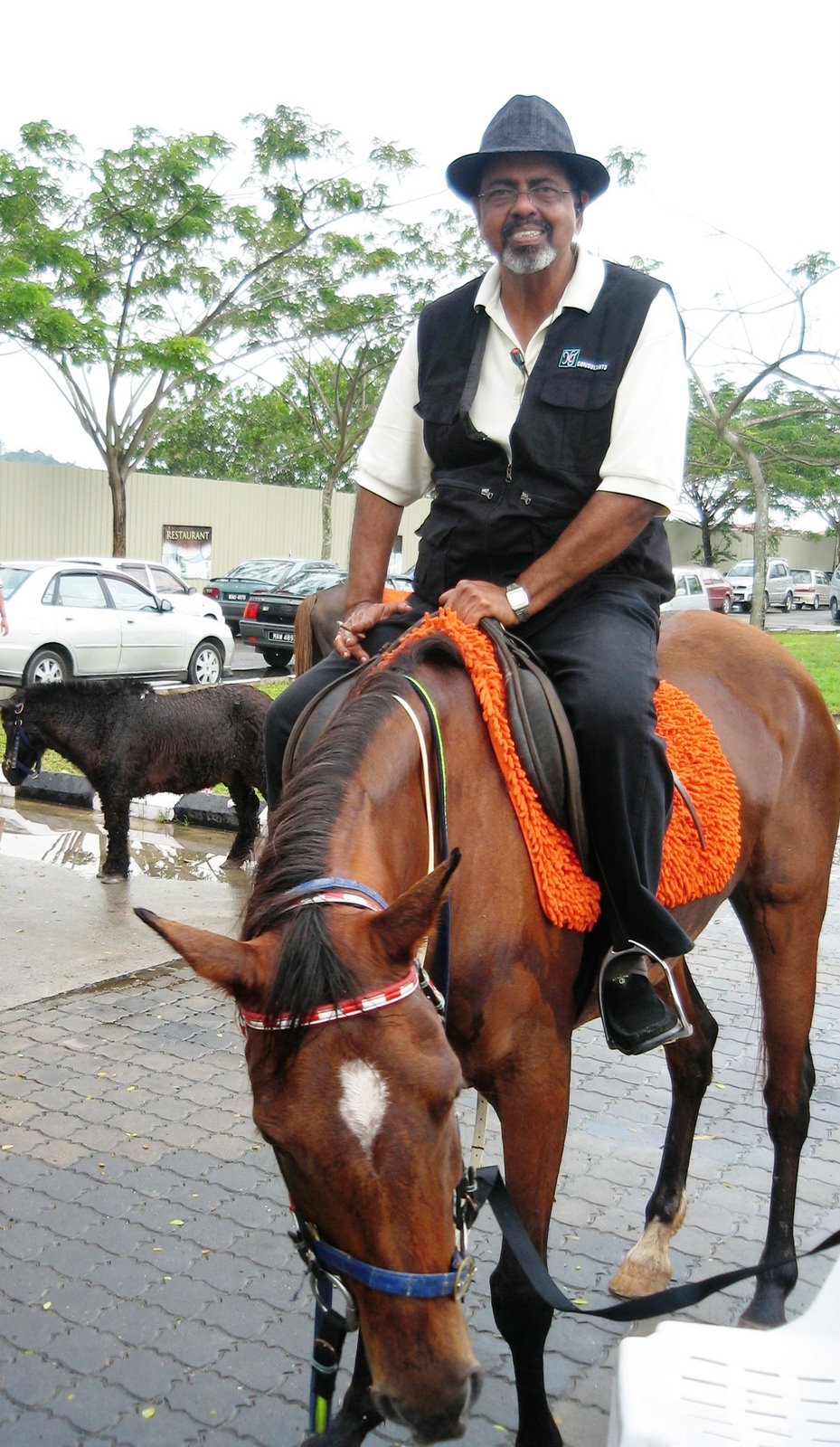











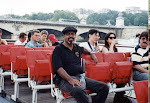

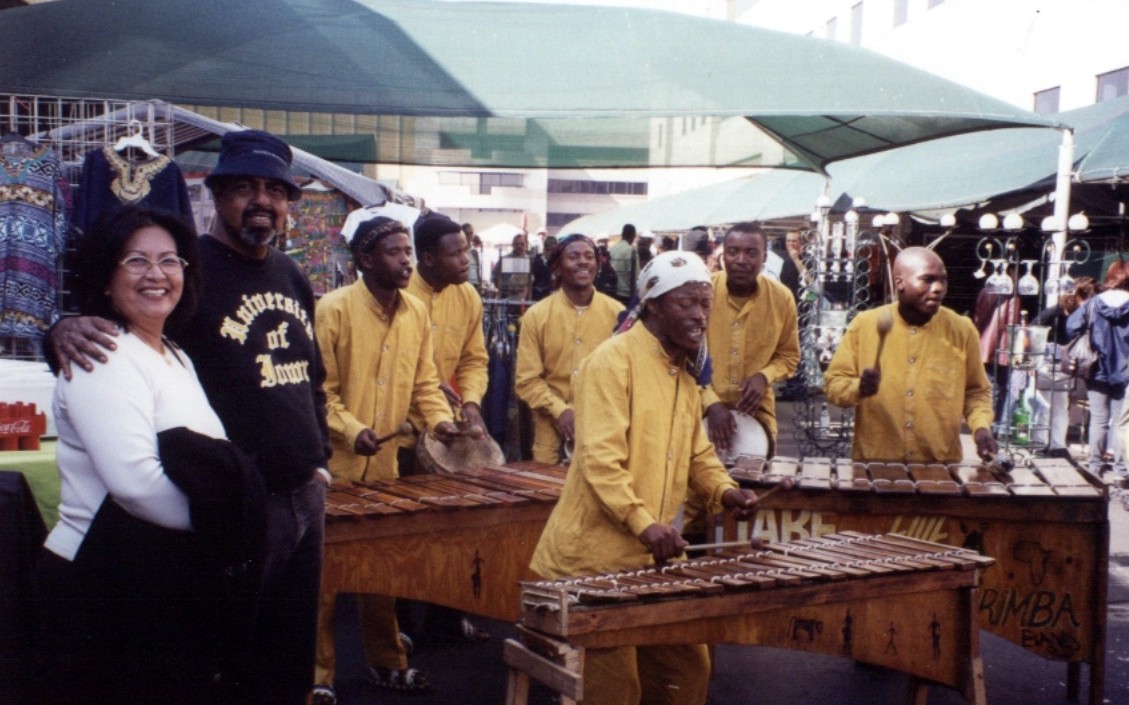

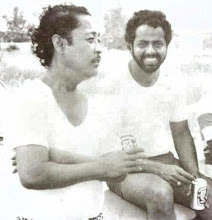
2 comments:
assalamualaikum..!!
hello uncle..
sy kidz from kl..
sy minat sgt dlm muzik
trutamanya dlm bentuk guitar..
buat mase nie sy xpndai utk mmilih sifu dlm genre yg sy minati..
so sy nk minta advice skit dri uncle about my problem..?
klau uncle sudi reply msg sy
just hntar di.
myspace email..!!
kristal_rock2000@yahoo.com
assalamualikum uncle..sy berminat utk mengetahui mengenai latar belakang pertubuhan awal muzik di sekolah. sy diberitahu oleh kawan, terdapat 20 buah sekolah yg terpilih as a experimental based utk pertubuhan muzik di sekolah tersebut..apakah 20 buah sekolah tersebut..bolehkah uncle terangkan kepada sy..terima kasih.
Post a Comment